Classic Commentaries and Studies on Romans Upgrade (32 vols.)
Digital Logos Edition
Overview
This extensive collection provides notable classic studies and commentaries on one of the most theologically dense books in the Bible, Paul’s epistle to the Romans. Spanning five centuries of scholarship, the Classic Commentaries and Studies on Romans Upgrade combines critical interpretations, exegetical studies, discussions of thematic elements, study guides, and practical applications. This collection’s valuable insights are only available together in this special upgrade to Classic Commentaries and Studies on Romans, offering easy access to nearly 8,000 pages of significant scholarship.
The Classic Commentaries and Studies on Romans Upgrade is invaluable for students, scholars, pastors, historians, teachers of the Bible, and anyone studying Romans. With Logos Bible Software, these time-tested volumes are enhanced by cutting-edge research tools. Scripture citations link directly to English translations, and important terms link to dictionaries, encyclopedias, and a wealth of other resources in your digital library. With Logos’ advanced search features, you can perform powerful searches by topic or Scripture reference—finding, for example, every mention of “faith,” or “Romans 8:38.” Logos’ tablet and mobile apps let you take your study wherever you go.
Want more classic works on Romans? Check out Classic Commentaries and Studies on Romans, available now.
This title is included in the following collections
You can save when you purchase this product as part of a collection.
Logos 7 Reformed Platinum Lega...
$1,499.99$1,499.99Logos 7 Reformed Diamond Legac...
$2,999.99$2,999.99Logos 7 Reformed Portfolio Leg...
$4,749.99$4,749.99Logos 9 Lutheran Portfolio Leg...
$4,749.99$4,749.99
- $11,399.99
- $11,399.99
- $21,749.99
- $24,999.99

- Nearly eight-thousand pages of scholarship on Romans
- Noted authors from a wide variety of backgrounds across five centuries
- A blend of devotional and academic commentary
- Title: Classic Commentaries and Studies on Romans Upgrade
- Volumes: 32
- Pages: 8,004
- The Sinner’s Sanctuary: Forty-Eight Sermons on Romans 8 by Hugh Binning
- An Exposition of the Epistle of Paul the Apostle to the Romans by John Brown
- A Logical Analysis of the Epistle of Paul to the Romans by Charles Ferme
- An Exposition of the Ninth Chapter of the Epistle to the Romans by John Goodwin
- St. Paul’s Teaching on Sanctification: A Practical Exposition of Romans VI by James Morison
- Exposition of the Ninth Chapter of the Epistle to the Romans by James Morison
- Commentary on St. Paul’s Epistle to the Romans, vol. 1 by Friedrich Adolph Philippi
- Commentary on St. Paul’s Epistle to the Romans, vol. 2 by Friedrich Adolph Philippi
- Curae Romanae: Notes on the Epistle to the Romans by W. Walford
- Christ interpreted: Paul’s Letter to the Romans, the Greatest Interpretation of Jesus Christ in All Literature by C. H. Nash
- God’s Gospel and God’s Righteousness: A Study of Romans I to V by Philip Mauro
- God’s Gift and Our Response: A Study of Romans V 12 to VIII 14 by Philip Mauro
- God’s Love and God’s Children: A Study of Romans VIII 14 to XVI 28 by Philip Mauro
- The “Wretched Man” and His Deliverance, Romans VII by Philip Mauro
- God’s Salvation: Being the Sinner’s Justification and the Saint’s Deliverance as Set Forth in the Epistle to the Romans by John Fort
- Hardest Text to Believe: Romans 8:29 by F. B. Thorn
- Illustrated Notes on St. Paul’s Epistle to the Romans by C. Neil
- Is Sanctification Perfect Here Below? or Romans VI-VIII expounded, with special reference to the views of Messrs. Pearsall Smith and Darby by Robert Govett
- Notes Expository of the Greek of the First Chapter of the Romans: With Remarks on the Force of Certain Synonyms, etc. by B. W. Newton
- Salvation and the Old Theology: Pivot Points in Romans by Len G. Broughton
- Simple Studies in Romans by William L. Pettingill
- St. Paul’s Epistle to the Romans, a New Translation with a Brief Analysis by William G. Rutherford
- St. Paul’s Three Chapters on Holiness: Or an Attempt to Ascertain the Exact Meaning of the 6th, 7th, and 8th Chapters of St. Paul’s Epistle to the Romans by John Venn
- Studies in Romans by Grace Saxe
- The Bulwarks of the Christian Faith: As Expounded in the Epistle to the Romans: Addresses on Vital Subjects by John Ritchie
- The Epistle of St. Paul to the Romans by E. H. Gifford
- The Epistle to the Romans: With Notes Critical and Practical by M. F. Sadler
- The Epistle to the Romans in Greek and English: With an Analysis and Exegetical Commentary by Samuel H. Turner
- The Epistles of Paul, the Apostle, to the Thessalonians, Corinthians, Galatians, Romans, and Philippians by James Drummond
- The Gospel according to St. Paul: Studies in the First Eight Chapters of His Epistle to the Romans by J. Oswald Dykes
- The Life of Service: Some Christian Doctrines from Paul’s Experience in the Epistle to the Romans by James I. Vance
- The Bible Infallible: Triumphant Reply to Rhondda Williams’ Case Against the Bible by John Urquhart
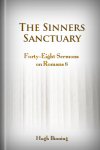
This volume compiles the sermons of Scottish preacher Hugh Binning on the complexities of the eighth chapter of Romans. Binning explores this theologically rich chapter in sermon form.
Hugh Binning (1627–1653) was a Scottish philosopher, theologian, and minister. He studied philosophy at the University of Glasgow and was appointed regent and professor of philosophy by 19 years old. He became a minister at a church in Govan three years later, where he served until his death in 1653. He is also the author of A Treatise of Christian Love.
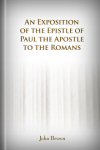
This massive volume contains John Brown’s rigorous expository work on Romans. Brown works through this epistle verse by verse, providing scores of valuable insights into interpreting this powerful book.
John Brown (c. 1610–1679) graduated at the University of Edinburgh in 1630. He was a highly respected peer of Samuel Rutherford, mentioned frequently in Rutherford’s letters. For many years, he was settled in his duties as a pastor and church leader, and didn’t become involved in parliament and the Reformation of Scotlant until 1662. He was one of the first ministers arrested and excommunicated for opposing King Charles II’s involvement in the affairs of the church.
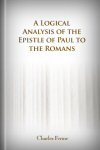
This volume contains Charles Ferme’s analytical work on Romans, in which “all the more difficult words, sentences, and phrases are exactly, fully, and clearly explained from the sacred Scriptures.”
Charles Ferme (1567–1617) was raised in Edinburgh, Scotland. He was educated at Edinburgh University, receiving his master’s in 1587. He became a regent in 1589. Ferme also served as a minister and college principal during his life.
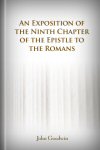
This volume contains John Goodwin’s careful expository text, working through Romans 9 verse by verse.
John Goodwin was a fellow of Queen’s College, Cambridge and vicar of St. Stephen’s in London.
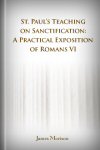
In this volume, James Morison tackles Romans 6, giving special attention to Paul’s teaching on sanctification. He sets out to give a “practical” exposition, which he defines as “Scripture Explication . . . the unfolding and exposing to view of the thoughts which had been infolded into the origination of the sacred text.” He proceeds in a manner that is easy to understand, while still giving thorough attention to the nuances of the text, including exposition on original Greek phrases when necessary.
James Morison (1816–1893) was born in Bathgate, Linlithgowshire, and educated at Edinburgh University. He started training for ministry under John Brown in the United Secession Church, and was ordained in 1840. Theological differences led Morison to found the Scottish Evangelical Union, as well as a theological academy, established in 1843. He held the chair of exegetical theology and remained principal until his death.
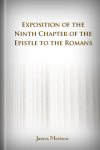
James Morison’s Exposition of the Ninth Chapter of the Epistle to the Romans features careful consideration of original Greek phrases, a helpful appendix that explores in depth a number of topics relating to specific verses, such as “Practical Excursus on the Potter and His Clay” of Romans 9:21.
James Morison (1816–1893) was born in Bathgate, Linlithgowshire, and educated at Edinburgh University. He started training for ministry under John Brown in the United Secession Church, and was ordained in 1840. Theological differences led Morison to found the Scottish Evangelical Union, as well as a theological academy, established in 1843. He held the chair of exegetical theology and remained principal until his death.
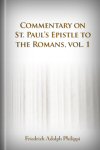
This volume contains the first half of Friedrich Adolph Philippi’s massive commentary on Romans. It contains a brief introduction, useful for establishing context, and many helpful footnotes. Philippi carefully works through each verse of Romans, utilizing original Greek phrases throughout the text.
Friedrich Adolph Philippi was professor of theology at the University of Rostock.
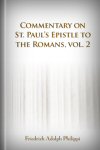
This volume contains the second half of Friedrich Adolph Philippi’s massive commentary on Romans. Philippi carefully works through each verse of Romans, utilizing original Greek phrases throughout the text, and providing many helpful footnotes. He references doctrines drawn from specific passages and explores the comments of other prominent theologians, including Calvin, Gerhard, and Luther.
Friedrich Adolph Philippi was professor of theology at the University of Rostock.
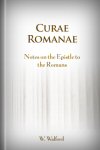
In this volume, William Walford provides his own “revised translation” of Paul’s epistle to the Romans, along with reflections and explanatory notes following each chapter. Walford also includes appendices offering further explanation of specific concepts, as well as notes on the original Greek and other English translations.
William Walford (1772–1850) was born in Bath, England. He was educated at Homerton Academy and became a Congregational minister. He served a number of congregations, including Stowmarket, Great Yarmouth, and Uxbridge. He was also a tutor of classics at Homerton academy. He wrote the hymn “Sweet Hour of Prayer” as well as The Manner of Prayer and A Catechism on Christian Evidence.
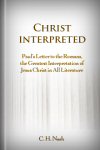
This volume contains Clifford Harris Nash’s translation and commentary on the epistle to the Romans.
C. H. Nash (1866–1958) was principal of the Melbourne Bible Institute.
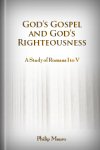
In this volume, Philip Mauro begins a straightforward analysis of Paul’s epistle to the Romans, covering Romans 1 through Romans 5:11. He focuses on the prominent themes of God’s righteousness and the goodness of the Gospel, while discussing humanity’s fallen state, justification, God’s mercy, and much more, all in a clear and practical way.
Philip Mauro (1859–1952) was a prominent patent lawyer who became a Christian in 1903, at age 45. He went on to become prolific writer, author of books including God’s Pilgrims, More than a Prophet, The Hope of Israel, and The Church.
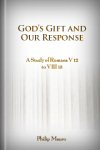
This volume picks up Philip Mauro’s study of Romans—begun in God’s Gospel and God’s Righteousness—and gives a detailed analysis of Romans 5:12 through Romans 7:13, with a practical rather than doctrinal emphasis. He focuses his study on Paul’s teaching concerning sin, death, the Law, and eternal life. He also begins discussing the present ministry of the Holy Spirit.
Philip Mauro (1859–1952) was a prominent patent lawyer who became a Christian in 1903, at age 45. He went on to become prolific writer, author of books including God’s Pilgrims, More than a Prophet, The Hope of Israel, and The Church.
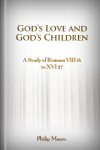
This volume continues Philip Mauro’s study of Romans, which began with God’s Gospel and God’s Righteousness and God’s Gift and Our Response. God’s Love and God’s Children picks up at Romans 8:14. In working through the latter part of Paul’s epistle to the Romans, Mauro explores God’s love, glory, adoption, and much more.
Philip Mauro (1859–1952) was a prominent patent lawyer who became a Christian in 1903, at age 45. He went on to become prolific writer, author of books including God’s Pilgrims, More than a Prophet, The Hope of Israel, and The Church.
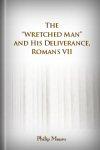
This volume contains Philip Mauro’s study of the conflict between the mind and the flesh, as discussed in Romans 7. Mauro also discusses contents of the four preceding chapters and the first verse of chapter 8, giving careful and thorough consideration to all concerned doctrines.
Philip Mauro (1859–1952) was a prominent patent lawyer who became a Christian in 1903, at age 45. He went on to become prolific writer, author of books including God’s Pilgrims, More than a Prophet, The Hope of Israel, and The Church.
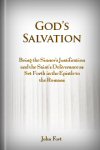
In this volume, John Fort undertakes a study on salvation as discussed in Paul’s letter to the Romans. While Fort focuses his study on Romans, he also brings Paul’s epistles to Colossians and Ephesians into the discussion, in order to gain a more comprehensive understanding. Fort examines subjects including the justification of the sinner, the deliverance of the saint, and more. This volume also includes appendices “A Sketch of God’s Dispensational Dealings” and “A Comparative View of the Epistles.”
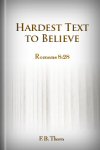
In this brief text, pastor F. B. Thorn shares his reflections on Romans 8:28. Writing in a warm and personal style, he unpacks the difficulty of fully believing that “God works for the good of those who love him.” He highlights and analyzes false assumptions we often hold such as “God is at the mercy of men” or “only the things that eliminate hardship and difficulty are working for our good.”
F. B. Thorn was pastor of the First Baptist Church in Wichita, Kansas. He spoke at the annual Paisano Baptist Encampment meetings for many years.
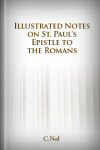
This study on Romans was designed to be a critical and systematic work, simplified enough to be useful to the common man. Neil provides helpful context in the introduction. He then gives an exposition of the text of Romans which works verse by verse, laid out beside the text itself. Neil furnishes notes that contain “explanatory, homiletical, suggestive, and illustrative matter, so combined as to form one organic whole.”
C. Neil was an ordained minister and served at St. Matthias’s, Poplar, in the East End of London.
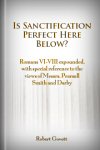
First published in 1875, this text undertakes a comprehensive analysis of Romans, centered on the question posed in the title: “is sanctification perfect in earthly life?” Govett gives the majority of focus to Romans 6 through 8, where he examines such themes as the connection of justification and sanctification, deliverance from the Law, the inward struggle of the old man and the new, and more.
Robert Govett (1813–1901) was a British theologian and pastor. Educated at Oxford, and ordained into the Church of England in 1837, he wrote many books and brochures including The Life, Walk, and Triumph of Faith.
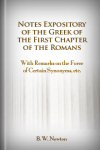
In this volume, Benjamin Willis Newton provides extensive notes on the original Greek of the first chapter of Romans, initially designed to accompany some of Newton’s other observations on the first and second chapters.
B. W. Newton (1807–1899) was born in Davenport to a Quaker family. He was educated at Exeter College, Oxford, where he became a fellow. Newton became a member of the Anglican Church at Oxford, which he later left, becoming influential in the Plymouth Brethren. He eventually left the Bretheren as well, setting up an independent chapel in Bayswater, London. He is the author of several books including Gospel Truths and Aids to Prophetic Inquiry.
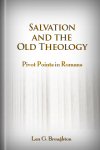
This volume compiles a series of lectures given to the Tabernacle Bible School in Atlanta, Georgia. Targeting his work toward the laymen, Broughton provides an expository systematic work in accessible language on “the essential doctrines of God, Christ, sin, atonement, propitiation, redemption, reconciliation, and salvation, as taught in Romans and held by the early Church.”
Len G. Broughton (1865–1936) was a Baptist minister and medical doctor in Atlanta, Georgia. He founded Tabernacle Baptist Church in Atlanta and Tabernacle Infirmary, which became the Georgia Baptist Hospital. He wrote numerous books, including Table Talks of Jesus, The Soul Winning Church, and The Second Coming of Christ.
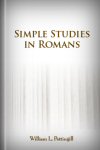
In this volume, Bible teacher William L. Pettingill sets forth a straightforward study of Romans, perfect for gaining an overview of this rich theological epistle. Pettingill breaks his work into four sections: sin, righteousness, vindication, and walk, according to the structure of the epistle.
William L. Pettingill (1886–1950) was a preacher, teacher, and author. He cofounded the Philadelphia School of the Bible in 1913, and served as dean. He also served on the council of the Central American Mission and wrote widely. His books include Simple Studies in Daniel, Israel, Jehovah’s Covenant People, and Simple Studies in Matthew.
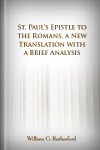
In this volume, scholar William Rutherford gives his translation of Paul’s epistle to the Romans, along with helpful expository and analytical notes.
William G. Rutherford (1853–1907) was a Scottish scholar. He was educated at St. Andrews and Balliol College, Oxford, where he studied natural science. He served as head master of Westminster School and a fellow of University College, Oxford. He produced English translations of five Pauline epistles and other works, including Elementary Greek Accidence and Lex Rex.
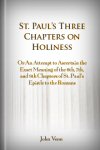
In this volume, John Venn provides a thorough analysis of Romans 6 through 8. He gives special focus to the subject of personal holiness, which he identifies as the central theme of these chapters, which are “more systematic in the treatment of it, than any other portion of Scripture.”
John Venn was a fellow of Queen’s College, Cambridge, and vicar of St. Peter’s, Hereford.
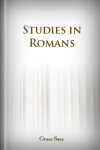
This volume contains a study guide for Romans, arranged for the lay study of Romans. It was designed with a “twofold purpose: first, to induce the student to do some original study of each chapter of Romans for himself, and second, to help make clear the great teachings of the book.” Each chapter includes a study sheet with study questions, and several pages of explanatory comments and quotations.
Grace Saxe arranged numerous similar studies, such as Studies in the Book of Exodus, Studies in the Life of Christ, and Studies in Hebrews.
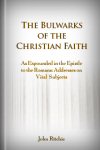
This volume contains John Ritchie’s exposition on the book of Romans, in which he focuses on a series of essential truths, or “bulwarks of the Christian faith,” including condemnation, justification, reconciliation, identification with Christ, sanctification, glorification, and salvation. In this book, he reproduces texts of his sermons and combines them with further explanatory notes.
John Ritchie was also the author of Impending Great Events.
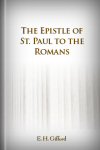
This volume contains Edwin Hamilton Gifford’s thorough commentary and notes on Paul’s epistle to the Romans, which give insights into context and helpful analysis and exposition.
E. H. Gifford (1820–1905) was an Anglican priest and author. He was educated at Shrewsbury and St. John’s College, Cambridge, and ordained in 1845. He was an honorary canon of Worcester, and later archdeacon of London.
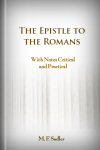
In this volume, M. F. Sadler provides a verse-by-verse critical commentary on Paul’s epistle to the Romans. Sadler provides extensive notes and shares insights into practical application.
M. F. Sadler was an Anglican priest. He served as rector of Honiton, England, and wrote several other commentaries, including volumes on each of the four Gospels.
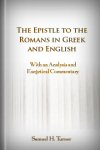
Samuel Turner combines commentary and thorough analysis, along with notes on the original Greek, to create a comprehensive study of Romans, packed with helpful insights into this epistle.
Samuel H. Turner was professor of biblical literature and interpretation of Scripture in the theological seminary of the Protestant Episcopal Church. He was also professor of the Hebrew language and literature at Columbia University, New York.
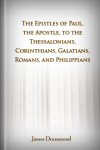
James Drummond’s work on the epistles of Paul provides a careful exposition aimed at those “who have sufficient interest in theology to wish for a fuller understanding of the Epistles of Paul, and yet not enough technical scholarship to draw them to the larger commentaries on the Greek text.” Drummond offers a helpful introduction to, commentary on, and analysis of each of the letters to the Thessalonians, Corinthians, Galatians, Romans, and Philippians.
James Drummond was principal of Manchester College, Oxford. He was also the author of The Jewish Messiah, Via, Veritas, Vita, and many other works.
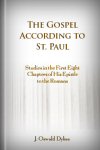
In The Gospel according to St. Paul, J. Oswald Dykes seeks not to provide a comprehensive commentary or analysis but to “restate in plain—that is, non-technical—language the course of the argument and the development of thought through [the first eight chapters of Romans].”
J. Oswald Dykes also wrote The Manifesto of the King, Abraham, the Friend of God, and many other titles.
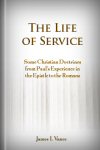
Taken from addresses originally given by James Vance at the General Conference of Christian Workers in East Northfield, Massachusetts, August, 1917, in The Life of Service, this volume highlights and provides an analysis of some important Christian doctrines presented by Paul in Romans. Vance presents this work as “an effort to dwell on certain aspects of Paul’s spiritual experience, and show how his doctrinal views . . . were an expression of his experience.” His end goal is to give an analysis that treats the doctrine of Romans as well as Paul’s experience.
James I. Vance also wrote Life’s Terminals, Tendency, The Young Man Foursquare, The Rise of a Soul, Royal Manhood, and others.
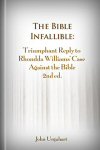
This book is composed of John Urquhart’s lectures in response to Rhondda William’s lectures on “Shall We Understand the Bible?” which suggest that the Bible contains “unworthy and contradictory conceptions of God, many of which it is our duty to reject,” among other things. Urquhart bases his response, which affirms the authority and legitimacy of Scripture, on Romans 3:2, providing thorough analysis.
John Urquhart (1740–1814) was a Presbyterian minister. He served as editor of The New Biblical Guide and was a member of the Society of Biblical Archaeology.